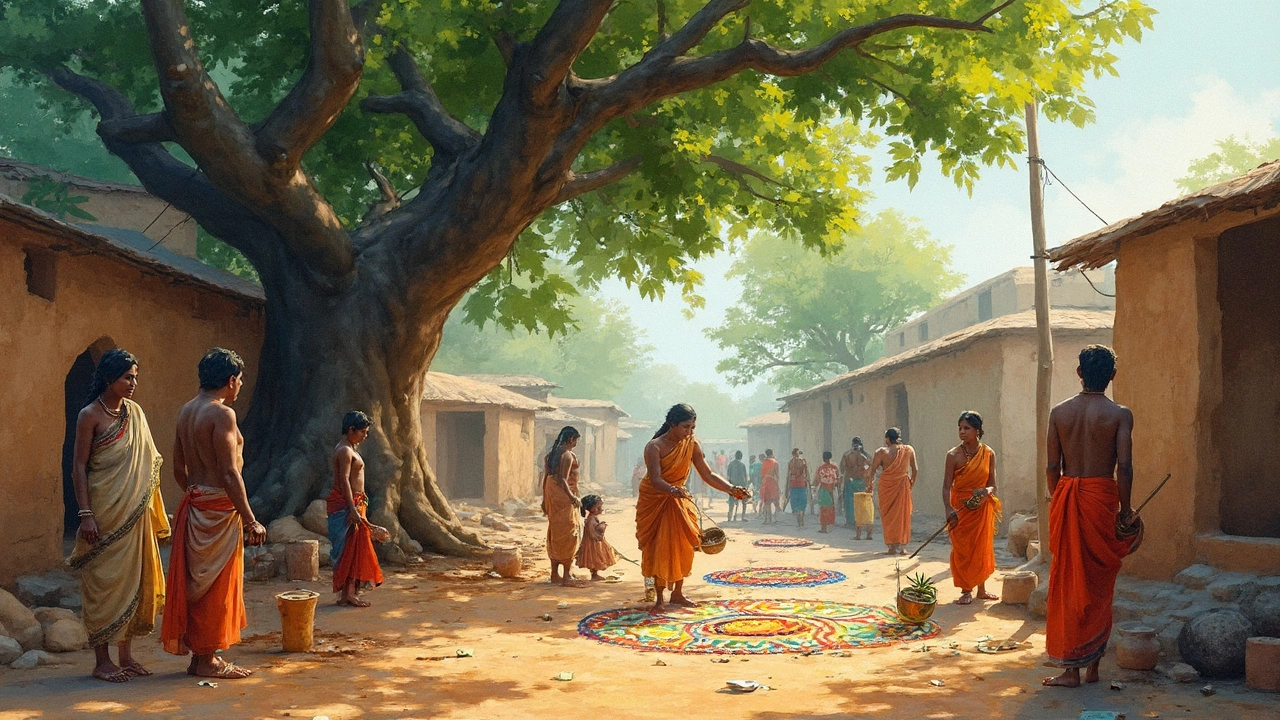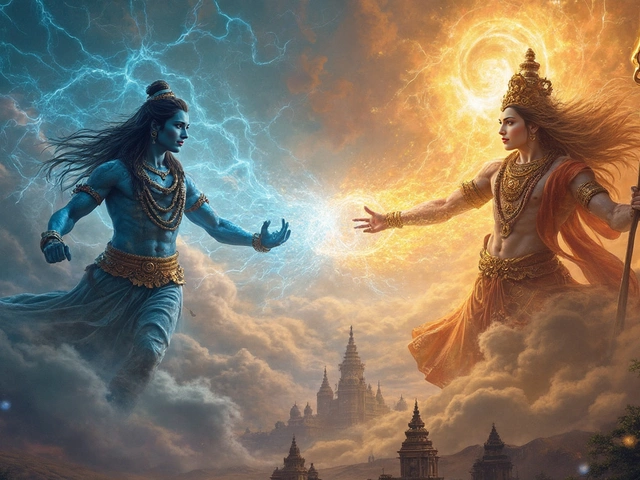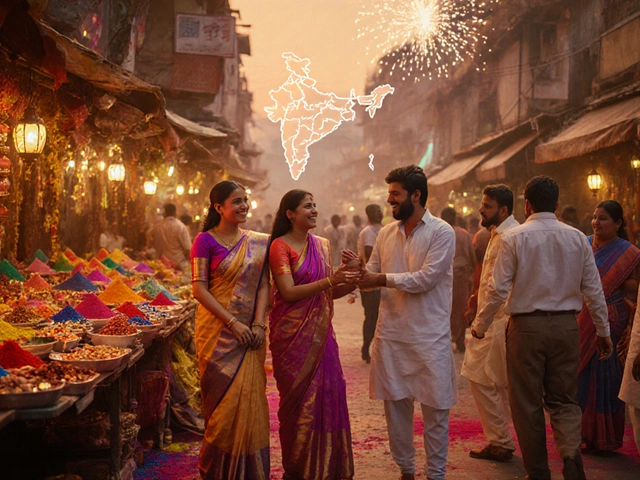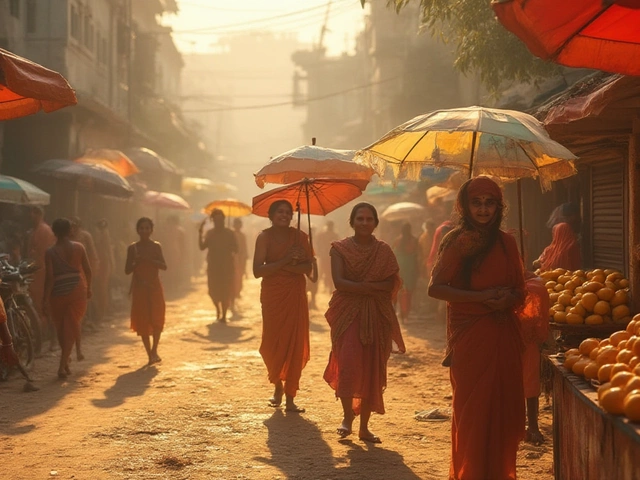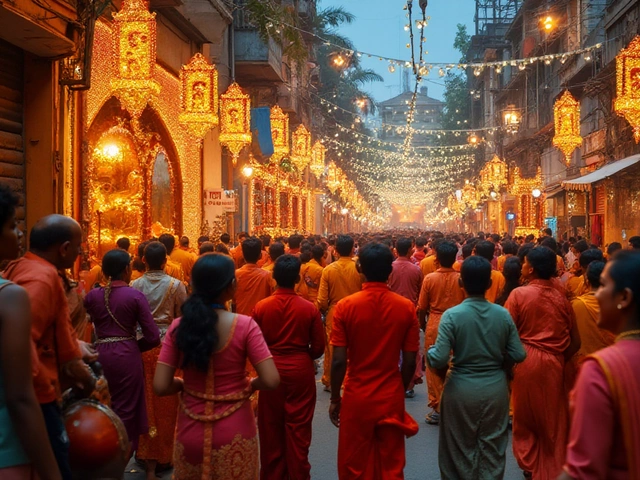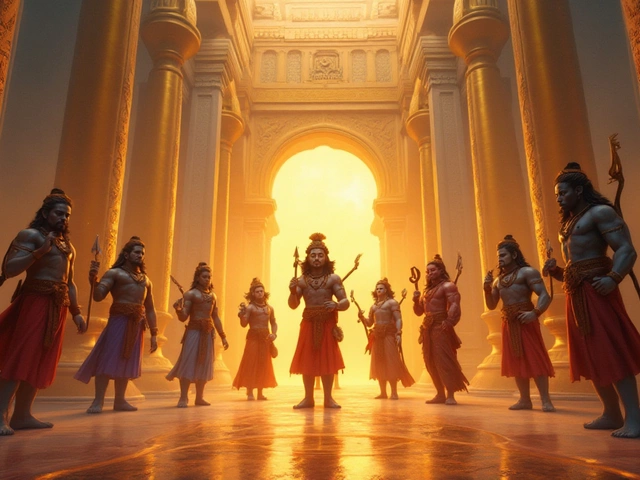Ever wonder how those amazing ancient Indian artworks came about without fancy studios or proper art classes? The truth is, many of those artists weren’t born into legacies or trained by masters—they learned on their own, right at home or out in their village fields. Back then, you didn’t need a degree to make jaw-dropping wall paintings or sculptures. If you had a knack for it and a bit of curiosity, you’d just try your hand, grab local materials, and see what happened.
This self-taught DIY attitude is baked into Indian art history. Some of the most iconic temple carvings and cave paintings were done by people who probably just watched elders at work and figured the rest out themselves. There was no “one right way”—folk and tribal art, even classical pieces, grew out of people experimenting, sharing tricks, and copying what worked.
If you’ve ever thought art is only for the specially gifted or those with teacher connections, well, ancient Indian artists would disagree. That’s good news for anyone today who wants to get started—skills were passed down by observation, practice, and guts, not by paper qualifications.
- What Makes a Self-Taught Artist in Ancient India?
- Famous Styles and Their Makers
- How Skills Spread Without Schools
- Tips for Modern Self-Taught Artists
What Makes a Self-Taught Artist in Ancient India?
Ancient India never had art schools like the ones you see today, yet some of its best art was made by folks learning on their own. A self-taught artist back then wasn’t someone with magic talent or special access—they were everyday people. Think potters, weavers, or carpenters who started adding their own designs to things they used every day. They watched others, picked things up on the side, and just kept at it.
People picked up painting or carving directly from real life and family traditions, not from textbooks. Sometimes, you’d see a skill pass down generations, but just as often, a curious person would try to copy the local temple’s artwork or a neighbor’s rangoli on the floor. This style of learning led to tons of variety—folk art in Bengal looks nothing like the mural paintings in Kerala, yet both kinds came from trial, error, and local know-how. That means the real spark behind ancient Indian art was personal drive, not classrooms.
If you peek at the famous Ajanta cave paintings, for example, experts say most artists got their hand steady from years of working on walls and rough surfaces, not paper. They had no blueprints. Instead, they tested plant juices for colors, experimented with straw brushes, and passed tips through village talk. These paintings weren’t just decoration—they were about telling stories when most people couldn’t even read.
Here’s a quick table that sums up how Indian art came together for self-taught creators:
| Fact | Details |
|---|---|
| Main training method | Observation, copying, and hands-on trial |
| Materials used | Natural dyes, clay, leaves, stones |
| Common subjects | Mythology, daily life, animals, rituals |
| Who could become an artist | Anyone with patience and curiosity |
| Famous self-taught hot spots | Ajanta (Maharashtra), Mithila (Bihar), Warli (Maharashtra), Kerala temples |
One cool thing? Women were just as likely to become artists, especially in places like Mithila, where they painted walls for festivals long before the rest of the world gave women a place in art history. Today, if you look close, you’ll spot all kinds of little tweaks and experiments in ancient works—proof that self-taught artists were always learning and never afraid to try something different.
Famous Styles and Their Makers
India's ancient art isn't just one thing—it's a patchwork of different styles, from punchy wall paintings to detailed metalwork. What’s wild is that a lot of these styles popped up far from royal courts, shaped by regular folks and small communities doing their own thing. Nobody had Instagram tutorials or step-by-step guides. They just watched, learned, and tinkered until they had something totally unique.
Indian art really blew up with styles like Warli, Madhubani, Gond, and Kalamkari. Warli, for example, started with a tribal group near Mumbai. These artists used mud walls as their canvas and rice paste for paint. You can see their simple stick figures even today, holding hands, dancing, or living everyday life. There’s no evidence Warli artists had a guru; skills passed from parents to kids, mostly by doing, not by sitting in a class.
Madhubani is another big name. This came from the Mithila region in Bihar, painted mostly by women straight onto their mud huts. Designs are packed with color, lots of nature patterns, and stories from old Indian texts. Again, no art schools here—just homegrown genius, where an aunt or grandma taught kids the basics during festivals or casual dinners.
Let’s not skip over the Ajanta cave paintings. While some say monks commissioned the work, historians point out that skilled workers from local villages handled the bulk of painting, many likely self-taught. Rock-cut temples like Ellora and Elephanta show similar approaches: groups of craftspeople, often from the same family, doing everything from chipping stone to layering on colors.
Here’s a quick rundown of how some famous ancient Indian styles came to life:
- Warli: Simple, geometric, tells daily stories, made by tribes in Maharashtra.
- Madhubani: Colorful, packed with symbols, led by village women in Bihar.
- Gond: Animal-inspired, bold patterns, done by Gond tribes in central India.
- Kalamkari: Hand-drawn, dyed fabrics, came up in Andhra Pradesh, mixing art with storytelling.
Think these styles were just for decoration? Nope. Many had deep meaning—or used for rituals, marking big events, or recording personal history. What’s cool is that these artists mixed local beliefs and what they saw around them, so every village had a slightly different spin.
| Style | Region | Main Artists | Materials |
|---|---|---|---|
| Warli | Maharashtra | Warli Tribe | Mud walls, rice paste |
| Madhubani | Bihar | Women villagers | Mud plaster, natural dyes |
| Gond | Madhya Pradesh | Gond Tribe | Home-made paints, paper, canvas |
| Kalamkari | Andhra Pradesh | Craftsmen/artisans | Cloth, plant-based inks |
If you’re itching to try your hand at any of these, don’t stress about technique. The spirit of these styles is all about doing, learning as you go, and making something personal and useful. Just start with simple shapes, use what’s at hand, and trust your creative instincts—that’s exactly how the original makers did it.
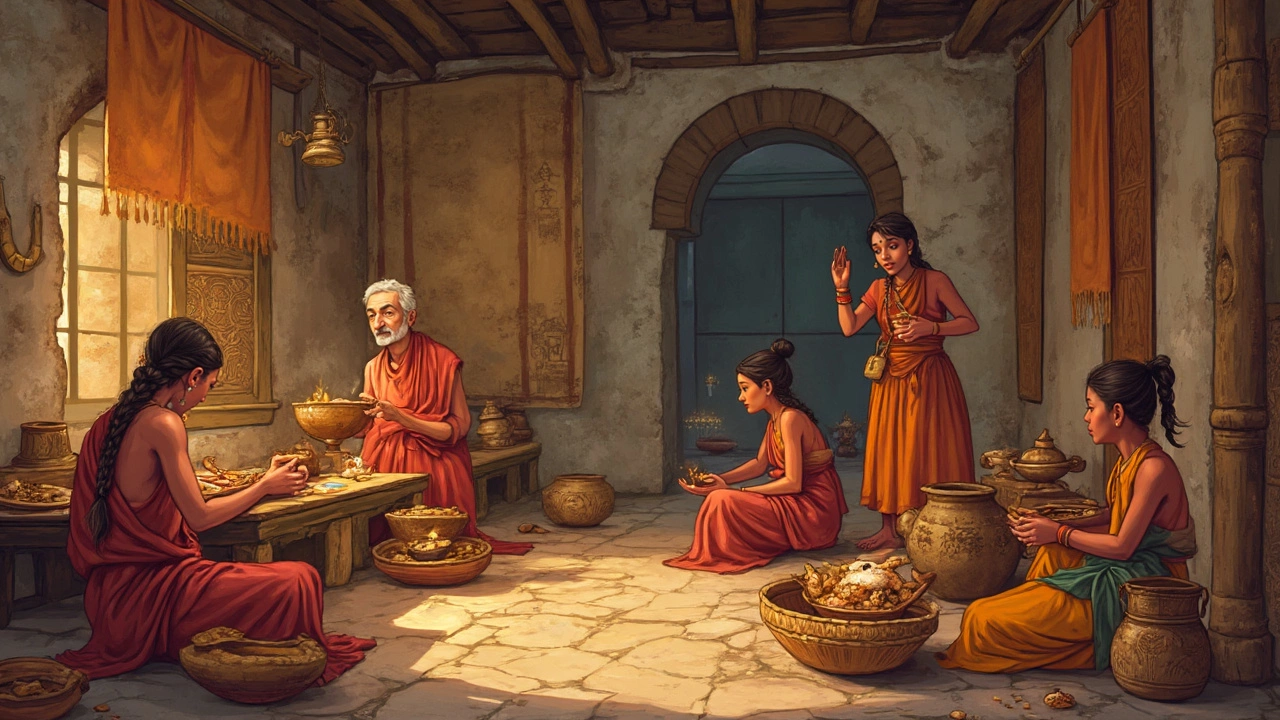
How Skills Spread Without Schools
In ancient India, learning art was anything but formal. There were no art colleges or textbooks back then, so skills traveled through word of mouth, daily life, and simple observation. Kids would pick up painting or carving just by watching parents or neighbors do it. It was common for families to pass down artistic tricks—sometimes for generations. No official lessons, just constant practice and trying out new ideas.
Villages often had open spaces where folks gathered, making it easy for anyone to watch and join in. Say you were interested in Madhubani painting from Bihar—you’d just hang around where mothers and grandmothers worked on murals, and soon you’d be learning the same bold lines and natural dyes. This hands-on method worked really well for folk and tribal art styles. Most didn’t use paper; walls, leaves, or even temple stones made perfect canvases.
Guilds (called shrenis) came into play around 300 BCE. These were groups of craftsmen—potters, painters, metal workers—who teamed up, took on orders, and taught newcomers on the job. No one cared much for certificates. They shared secrets right in the workshop.
| Source of Learning | Typical Method | Age Group | Region Example |
|---|---|---|---|
| Family | Observation, imitation, home projects | Kids, teens | Madhubani, Warli |
| Community events | Group art, festivals, rituals | All ages | Rajasthan, Andhra Pradesh |
| Guilds | On-the-job training, group commissions | Teens, adults | Kanchipuram, Varanasi |
If you’re aiming to follow a self-taught artist path now, there’s still plenty to grab from the past. Shadowing others, copying techniques, and experimenting with cheap or natural materials gets you just as far as any classroom—and it’s been proven for thousands of years. Next time you visit an art fair or see family doing crafts, pay attention. That’s how it all started.
Tips for Modern Self-Taught Artists
If you’re thinking about jumping into the world of Indian art without signing up for classes, you’re actually following a well-trodden path. Even in today’s digital age, learning on your own can totally pay off. Here are some straight-up, no-nonsense tips to get you rolling.
- Indian art has a long tradition of learning by doing—don’t wait for someone to say you’re ready, just start practicing.
- Break down famous pieces. Study old school works from Ajanta caves or Madhubani paintings. Snap close-up pictures (or find high-res images online), then sketch small sections to really get the hang of the patterns.
- Use what you have, just like ancient artists did—try household materials for colors and tools, especially if you’re working on folk styles. For example, turmeric, soot, and even beetroot juice can make great natural pigments.
- Share your work online and ask for feedback. Instagram, Reddit, and even old-school forums have lots of artists who help each other out for free. Many first-time artists have, in fact, landed their first buyers just by posting consistent updates.
- Document your progress. Taking regular photos or keeping a little art diary helps you spot improvements over time—it’s motivating and can even turn into your digital portfolio.
Here’s a quick table showing simple materials you can start with, whether you’re into ancient or folk techniques:
| Material | Ancient Example | Easy Substitute |
|---|---|---|
| Natural pigment | Red ochre (Ajanta caves) | Brick powder, turmeric |
| Brush | Chewed twigs, animal hair | DIY brushes from twigs or old makeup brushes |
| Canvas | Cloth, bark | Old pillowcases, recycled cardboard |
One last thing: The internet is packed with free resources. The National Museum, Delhi, and Victoria and Albert Museum, London, both have online galleries with detailed photos of ancient Indian works. YouTube is full of short demos on Madhubani, Warli, and more. No one’s expecting you to be perfect—just give it a go and let your work speak for itself, like artists have done for centuries.
